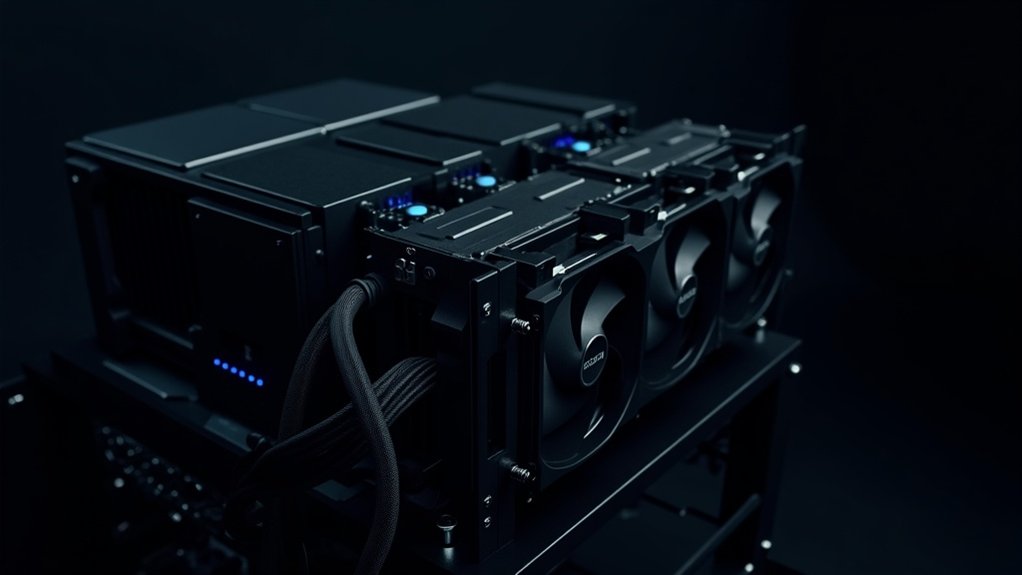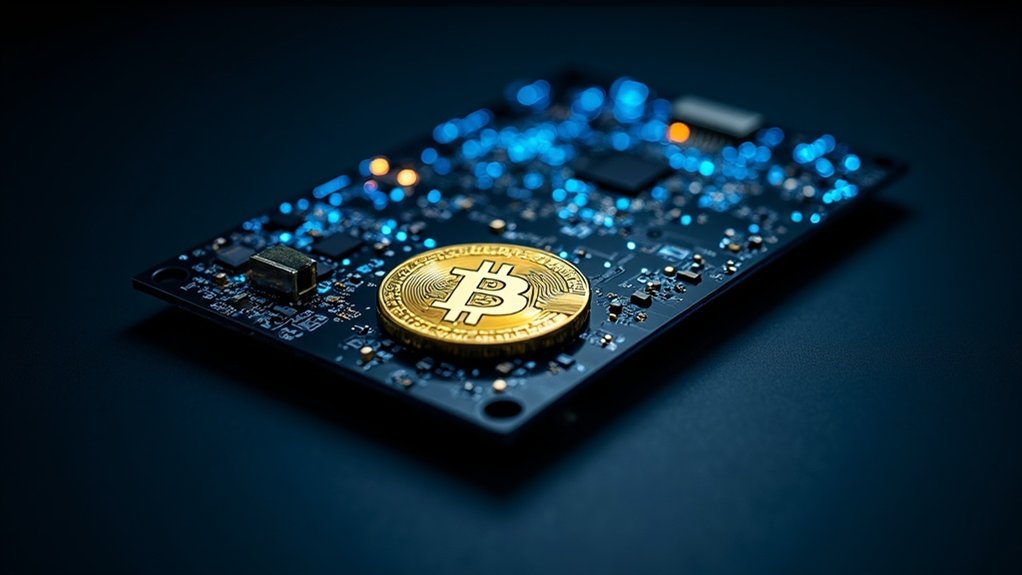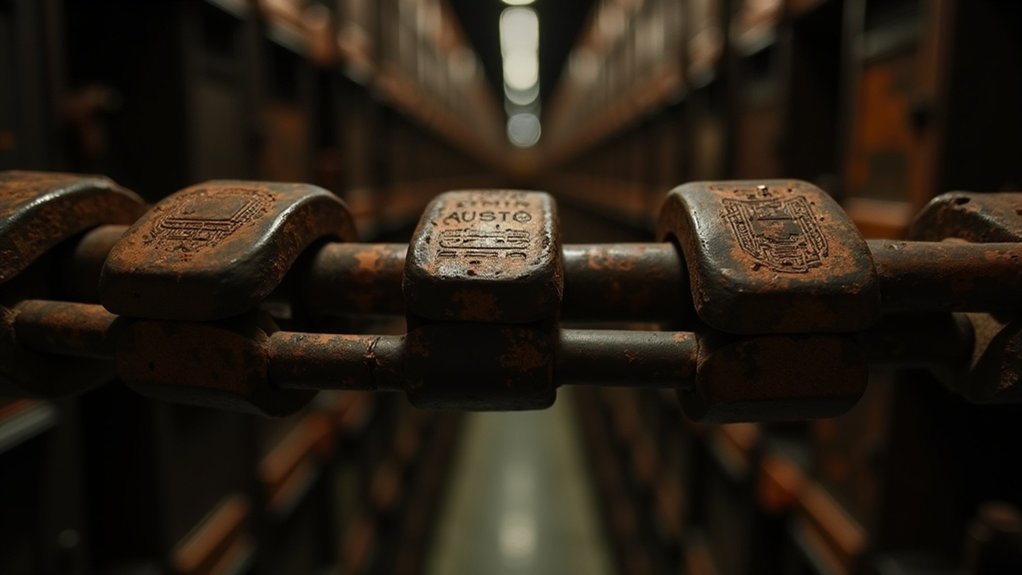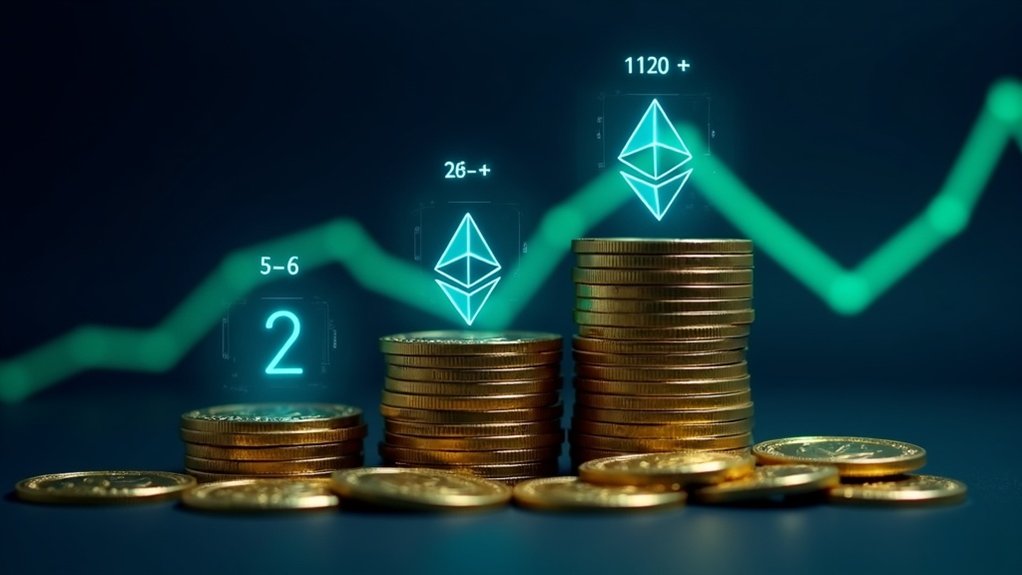Solo mining Bitcoin requires serious ASIC hardware, technical know-how, and patience. First, set up a full Bitcoin node and download the entire blockchain. Connect your mining software to your node using getblocktemplate RPC protocol. Then pray. Your expensive equipment will hash block headers with different nonce values, hunting for the golden ticket below difficulty threshold. Most solo miners wait years without rewards. It’s basically an expensive lottery that might leave you broke, hot, and annoyed.
While massive mining pools dominate today’s Bitcoin landscape, solo mining remains an option for the brave, the curious, or the slightly delusional. It’s simple in concept—you mine Bitcoin without sharing rewards with anyone else. No pools. No partners. Just you against the entire global network, trying to solve complex cryptographic puzzles first.
Solo mining: Bitcoin’s version of playing the lottery with expensive hardware and unwavering optimism.
Let’s be real. Solo mining in 2025 is a long shot. The computational power needed is enormous. You’re fundamentally buying lottery tickets with electricity. Still, some continue the solo journey, driven by principles or dreams of claiming that sweet, undivided 3.125 BTC block reward plus transaction fees. The mining difficulty adjusts automatically to maintain a consistent block generation time across the network.
First, you’ll need serious hardware. Consumer-grade equipment won’t cut it. ASIC miners—specialized machines designed specifically for Bitcoin mining—are your only realistic option. These machines aren’t cheap. They’re loud, hot, and hungry for electricity. Your power bill will skyrocket. Your living room will become uninhabitable.
Software setup is vital. Install and configure mining software to connect to the Bitcoin network. More importantly, you must run a full Bitcoin node. This means downloading the entire blockchain—hundreds of gigabytes of data that your system must validate. Your node connects you directly to the network, providing transaction data and allowing you to broadcast any blocks you might (miraculously) discover. Your mining software will use the getblocktemplate RPC to request block construction data from your Bitcoin node.
The mining process itself is brutally simple yet mathematically complex. Your ASIC repeatedly hashes block headers with different nonce values, hoping to find a value below the current difficulty threshold. The difficulty adjusts approximately every two weeks, ensuring blocks are found every ten minutes network-wide. With solo mining, you might wait years before finding a block. Or never.
Economically, solo mining rarely makes sense. The odds are stacked against you. Mining pools exist for a reason—they provide steady, predictable income instead of the all-or-nothing proposition of solo mining. But for those who value independence above practicality, the path is there. Difficult, expensive, and improbable—but there. By choosing to solo mine, you’re directly contributing to network decentralization and security which remains a core principle of Bitcoin’s design philosophy.
Frequently Asked Questions
What Are the Tax Implications of Solo Mining Bitcoin?
Solo mining Bitcoin creates immediate taxable income at fair market value when received. No escaping that.
Miners must report this income regardless of whether they convert to fiat. Later, when selling those coins, capital gains tax applies on any appreciation.
The upside? Mining expenses are deductible—electricity, hardware, even home office costs if used exclusively for mining.
Business structures like LLCs or corporations might offer advantages for serious miners.
The tax man always finds you. Always.
How Do Pool Fees Compare to Solo Mining Profitability?
Pool fees eat 1-2.5% of mining rewards. Steady income, but less money per block. Solo mining keeps 100% of rewards when blocks are found. No middleman.
The catch? Solo miners might wait months—or forever—for a single block. Pretty simple math.
Pool mining means consistent smaller payouts. Solo mining means gambling on striking it big. Most miners choose pools because, let’s face it, something beats nothing when the electric bill comes.
Can I Solo Mine Bitcoin With ASICS Other Than Bitmain?
Yes, Bitcoin solo mining works with any SHA-256 ASIC, not just Bitmain models.
MicroBT Whatsminers, Canaan AvalonMiners, and Ebang machines all do the job. The hardware brand doesn’t matter – it’s about hash power and connectivity.
You’ll need the same setup: a full Bitcoin node, mining software like CGMiner, and proper configuration regardless of manufacturer.
Different brands offer varying efficiency and hash rates. Same terrible odds of finding a block though. That’s mining for you.
What Happens to My Mining Setup During Bitcoin Halving Events?
During Bitcoin halving, a miner’s reward gets chopped in half. Brutal.
Their mining setup keeps running exactly the same, but suddenly earns 50% less Bitcoin per block. Profitability takes a hit unless Bitcoin’s price rises to compensate.
Older, inefficient machines might become paperweights overnight. Many miners are forced to upgrade hardware or find cheaper electricity. Some smaller operations just can’t survive.
The hash rate typically dips temporarily, then recovers as the ecosystem adjusts.
Is It Possible to Solo Mine Bitcoin on Renewable Energy?
Yes, solo mining Bitcoin on renewable energy is entirely possible.
Many miners already leverage solar, wind, or hydro power to cut electricity costs—mining’s biggest expense. Renewables solve the environmental criticism too. Perfect match, really.
The hardware requirements stay the same (expensive ASICs), but operational costs drop considerably. Best setup? Areas with abundant, cheap renewables.
Still tough to compete with massive mining farms, though. Economics improve when using otherwise wasted surplus energy.









